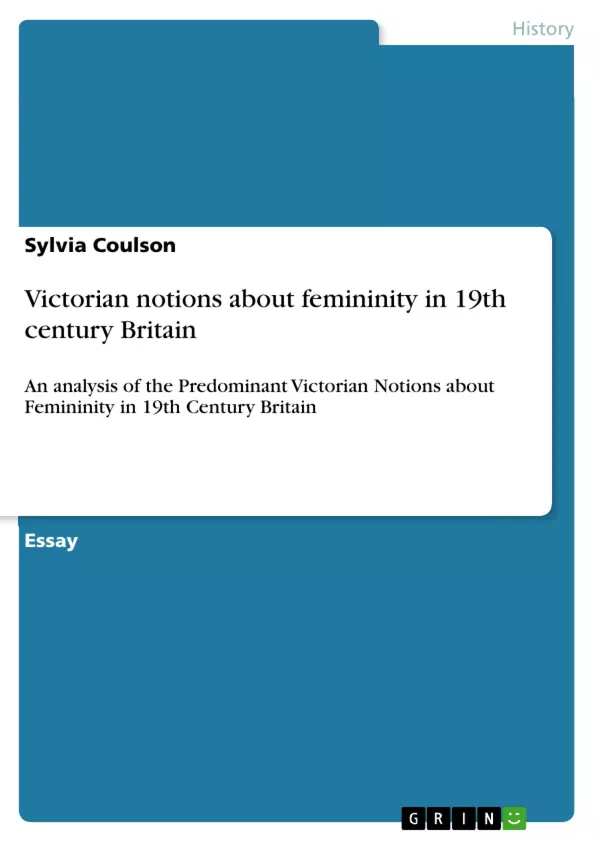Women were perceived as unequal to men throughout the 19th Century. Before 1850, women's rights were limited. A system existed which was entirely patriarchal (governed by men). Britain was run by common law; a law which dictated that once a woman married, she ended up with no rights to anything, for example, the house she lived in, the money she earned or the clothes she wore, because they all belonged to her husband. If she divorced, even her children were taken away from her.
Inhaltsverzeichnis (Table of Contents)
- Introduction
- Victorian Notions of Femininity
- Physical Strength and Gender Roles
- Intellectual Capacity and the Role of Education
- Biological Differences and Separate Spheres
- Moral Superiority and the 'Fallen Woman'
- Prostitution in Victorian Britain
- Social and Economic Factors
- Public Health Concerns and the Contagious Diseases Acts
- Marriage and Women's Rights
- Common Law and the Legal Status of Married Women
- The Married Women's Property Rights Acts
- Education and Employment
- Middle-Class Education and the Rise of Colleges for Women
- Working-Class Education and Employment Opportunities
- The Impact of Government Legislation
- The "Hidden Psychology" of Victorian Society
- Josephine Butler and the Fight for Equality
Zielsetzung und Themenschwerpunkte (Objectives and Key Themes)
This analysis aims to explore the dominant Victorian notions about femininity in 19th-century Britain, examining the prevailing attitudes towards women's roles, rights, and opportunities within a patriarchal society. Key themes explored include:- The influence of Victorian societal norms on women's lives
- The interplay between gender, power, and social expectations
- The historical context of women's rights movements and social reform
- The impact of biological and physiological differences on gender roles
- The role of education and employment in shaping women's status
Zusammenfassung der Kapitel (Chapter Summaries)
The text begins by outlining the limited rights women held in 19th-century Britain, highlighting the patriarchal system governed by common law. It then delves into the prevailing Victorian beliefs about femininity, exploring themes of physical strength, intellectual capacity, biological differences, and moral superiority. The analysis explores how these beliefs shaped women's roles in society, often restricting their access to education, employment, and political participation.
The text further explores the complex issue of prostitution in Victorian Britain, examining the social and economic factors that contributed to its prevalence. The impact of public health concerns, particularly the spread of venereal disease, and the subsequent legislative response, such as the Contagious Diseases Acts, are discussed in detail.
The text then examines the legal and social implications of marriage for women in Victorian society. The chapter highlights the restrictive nature of common law, which stripped women of their rights upon marriage. Significant legal reforms, such as the Married Women's Property Rights Acts, which granted women greater control over their property and finances, are explored.
The final sections of the text focus on the evolving landscape of women's education and employment opportunities in Victorian Britain. The emergence of colleges dedicated to female education and the impact of government legislation on working-class women are discussed, including the challenges and opportunities that arose from these changes.
Schlüsselwörter (Keywords)
Victorian femininity, gender roles, patriarchal society, women's rights, social reform, education, employment, prostitution, Contagious Diseases Acts, common law, Married Women's Property Rights Acts, 'fallen woman', Josephine Butler, Mary Wollstonecraft, 19th century Britain.- Quote paper
- Sylvia Coulson (Author), 2009, Victorian notions about femininity in 19th century Britain, Munich, GRIN Verlag, https://www.grin.com/document/280437



